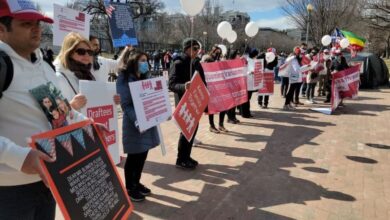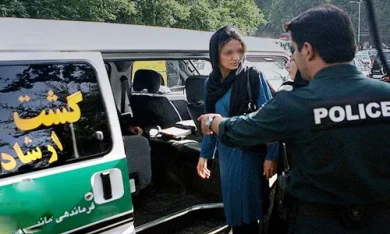Tucked into the foothills of northern Tehran lies Evin Prison, a place that has come to symbolize the Iranian regime’s brutal repression. Known internationally for its human rights abuses, Evin has become a tool of the Islamic Revolutionary Guard Corps (IRGC) for silencing dissent, particularly among activists, journalists, students, and women. Behind its high walls and heavily monitored corridors, countless voices of resistance have echoed — many smuggled out through letters, recordings, and accounts from former prisoners.
This article dives deep into the first-hand stories and letters from Evin, bringing to light the brutality, resilience, and defiance of those imprisoned. It analyzes the IRGC’s use of the prison system as a weapon of psychological warfare, especially against women, and the global implications of these stories.
1. Evin Prison: The Engine of Suppression
A. Historical Background
Evin was established in 1972 under the Shah’s regime, but its role expanded significantly after the 1979 Islamic Revolution. Since then, it has evolved into a core institution of state repression, used by the IRGC and Iran’s Intelligence Ministry.
Known for housing political prisoners, it holds:
• Journalists and writers
• Women’s rights defenders
• Protesters and students
• Ethnic and religious minorities
• Environmental activists
The prison is divided into several wards, including:
• Section 209: Run by the Intelligence Ministry, infamous for interrogations and solitary confinement.
• Women’s Ward: Where political and social activists, including Nobel laureate Narges Mohammadi, are held.
2. The IRGC’s Role in Turning Evin into a Psychological Battlefield
The IRGC’s control over Evin has turned the facility into far more than just a detention center. It has become a center of indoctrination, psychological warfare, and systematic human rights violations.
Tactics Include:
• Solitary confinement for weeks or months.
• Blindfolded interrogations lasting hours or days.
• Torture, including beatings, electric shocks, and mock executions.
• Verbal abuse and threats against family members.
• Forced confessions, later aired on state TV.
Purpose:
• Break the prisoner’s will.
• Extract false statements.
• Create fear and discourage future activism.
3. Voices from Within: Letters That Moved a Nation
While the regime tries to control all narratives, smuggled letters and memoirs from inside Evin have exposed the truth. These writings are often raw, powerful, and profoundly moving.
A. Narges Mohammadi: Voice of Defiance
One of the most well-known prisoners, Narges Mohammadi, a human rights activist and 2023 Nobel Peace Prize laureate, has penned numerous letters from inside Evin.
Key Themes in Her Letters:
• The “normalization” of violence by prison guards.
• Daily harassment and threats.
• The resilience of women prisoners: “We are imprisoned but unbroken.”
• A call to international human rights organizations: “Do not look away.”
Her words have resonated globally, amplifying the plight of Iran’s political prisoners.
B. Letters from Anonymous Protesters
Many detained protesters, especially from the 2022 “Women, Life, Freedom” movement, have shared accounts under pseudonyms:
• “We were blindfolded and told we’d never see our mothers again.”
• “They tried to humiliate us for showing our hair. But we laughed at them — even in chains.”
• “We wrote our names and what we witnessed on scraps of paper. We knew the world needed to know.”
These letters have been smuggled out via lawyers, hidden in books, or memorized and recited by released prisoners.
4. Women in Evin: Gender-Based Repression
Evin Prison is particularly cruel to women, who face a double layer of repression: one for being dissidents, and one for being female in a system that enforces gender apartheid.
Common Abuses Faced by Women:
• Sexual harassment and threats of rape.
• Forced virginity tests and invasive body searches.
• Being denied medical care for menstruation-related or chronic conditions.
• Psychological tactics that include shaming, isolation, and pressure to renounce feminist beliefs.
Despite this, many women — like Sepideh Gholian, Atena Daemi, and Nasrin Sotoudeh — continue to speak out after release or even from inside prison.
5. Evin as a Microcosm of Iran’s Oppression
The experiences inside Evin reflect the larger reality of authoritarian control in Iran. The prison is not an isolated system — it mirrors the IRGC’s broader strategy of:
• Using fear and violence to control narratives.
• Suppressing all forms of dissent.
• Targeting women, minorities, and intellectuals who threaten the regime’s power.
But it also reflects the spirit of resistance. Despite unimaginable suffering, many prisoners emerge stronger, bolder, and more determined.
6. The International Response: Too Little, Too Late?
Although international organizations like Amnesty International and Human Rights Watch have repeatedly documented abuses at Evin, consequences have been minimal.
What Has Been Done:
• The U.S. and EU have sanctioned some IRGC officials.
• The UN Human Rights Council opened a fact-finding mission in 2022.
• The Nobel Peace Prize awarded to Narges Mohammadi brought renewed attention.
What’s Still Needed:
• Universal designation of the IRGC as a terrorist organization.
• Stronger sanctions on prison officials and judges complicit in torture.
• Visa bans and asset freezes for IRGC-linked elites abroad.
• Support for Iranian civil society, especially organizations aiding released prisoners and their families.
7. Digital Resistance: Evin’s Walls Can’t Contain the Truth
Even under intense surveillance, stories from Evin find their way out. Activists and journalists in exile have created platforms like:
• “Evin Letters” projects that collect testimonies.
• Podcasts featuring audio clips of smuggled recordings.
• Encrypted chat groups where former prisoners share real-time updates.
This has created a counter-narrative, challenging the regime’s propaganda and humanizing the resistance.
8. Why These Voices Matter
The letters and stories from Evin are more than prison accounts — they are acts of resistance. In a country where the regime controls courts, media, and public space, the written word becomes a weapon.
They:
• Document state crimes.
• Offer hope to others inside and outside prison.
• Create historical memory.
• Demand accountability.
They remind the world: “We are not victims. We are witnesses and fighters.
Conclusion: The Prison That Couldn’t Break Them
Evin Prison, once designed to crush dissent, has become a beacon of resilience. The IRGC’s goal to silence activists has backfired. Each letter smuggled out, each story told, becomes a crack in the regime’s wall of fear.
Join Our Newsletter!
Stay informed with the latest updates, news, and ways to take action in the fight for justice and global security. Sign up now to get updates delivered straight to your inbox!





